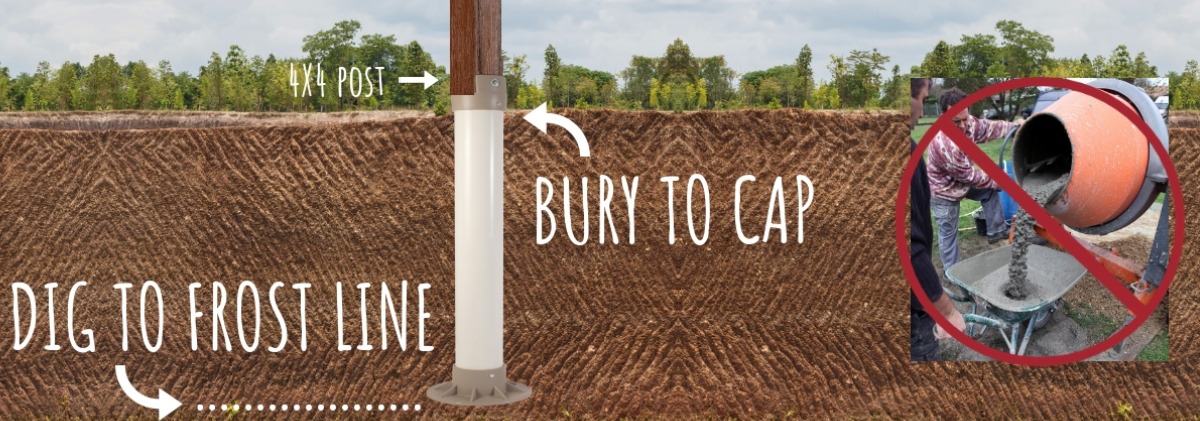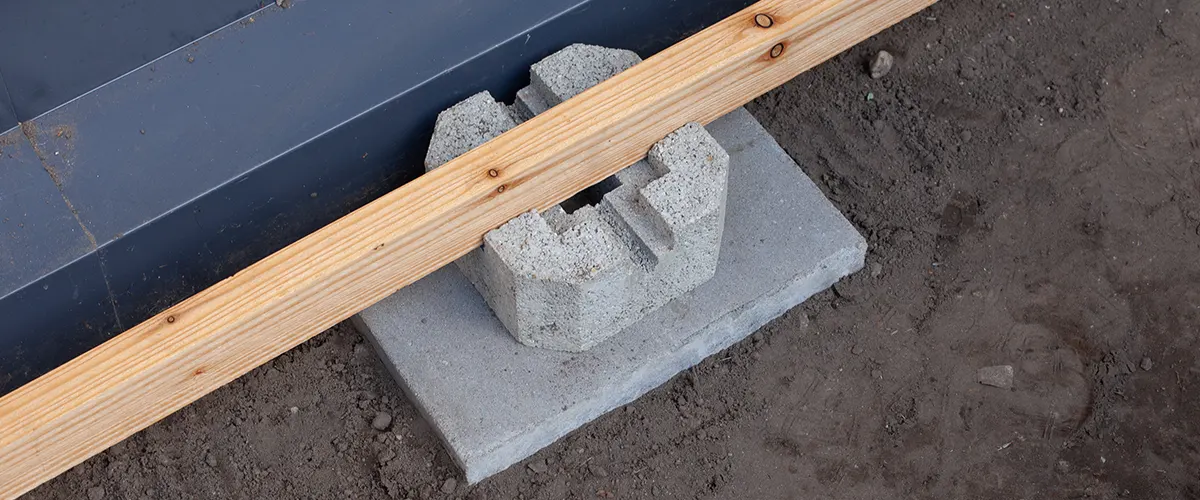Deck Footings 101: Navigating the Essentials for a Steady and Long Lasting Deck
Deck Footings 101: Navigating the Essentials for a Steady and Long Lasting Deck
Blog Article
Picking the Right Deck Footings for Stability and Resilience
When it pertains to developing a deck, one of the most crucial decisions you will make is choosing the appropriate footings for stability and durability. The longevity and safety and security of your deck depend greatly on the kind of grounds you select, as they give the crucial support and security to stand up to the test of time. With a myriad of choices available, it can be overwhelming to figure out which footings are best matched for your certain demands. In this discussion, we will explore the numerous sorts of deck grounds, think about the important factors to weigh when deciding, and look into the advantages and disadvantages of different options. By the end, you will have a more clear understanding of the options handy and be far better equipped to make an informed decision for your deck task.
Kinds Of Deck Grounds
There are a number of kinds of deck footings that can be utilized, each offering special benefits and considerations. One usual kind of ground is the concrete pier ground. These grounds contain a cylindrical opening full of concrete, which supplies a solid structure for the deck articles. Concrete pier footings are fairly easy to mount and provide exceptional stability, making them a popular option for numerous deck jobs.
One more kind of footing is the helical pile footing. Helical stacks are steel shafts with helical plates affixed to them. These footings are mounted by screwing them into the ground, which produces a protected structure for the deck. Helical heap grounds are perfect for locations with difficult soil conditions, as they can be installed in virtually any kind of kind of soil. If required., they likewise enable for very easy adjustment and leveling of the deck.
Alternatively, some contractors choose precast concrete footings. These footings are made of sturdy concrete and come in different forms and dimensions to suit various deck styles. Precast concrete footings are practical to install and give a secure base for the deck framework.
Ultimately, an additional choice is the post-in-anchor ground system. This kind of ground entails driving a steel anchor right into the ground and attaching it to the deck message. It provides flexibility in regards to positioning the deck articles and appropriates for decks with lightweight structures.
When picking the best kind of deck footing, it is necessary to think about factors such as dirt conditions, deck lots, and regional building regulations (Deck Footings). Consulting with an expert contractor or architectural designer can assist make certain the proper footing is selected for a steady and secure deck
Aspects to Take Into Consideration When Selecting Grounds
When choosing the ideal footings for a deck, it is crucial to very carefully think about different elements such as soil problems, deck lots, and adherence to local building regulations. These factors play a considerable role in ensuring the security and durability of the deck structure.
The type of soil on which the deck will certainly be developed identifies the type of footings needed. On the other hand, decks developed on clay or large soils might require footings that can fit read more the soil's tendency to expand and contract.
An additional vital aspect is the deck tons. The weight of the deck, consisting of the products used and any prospective online loads such as furniture or gatherings, need to be taken into consideration when picking footings. The footings must be developed to bear the weight of the deck and distribute it evenly to prevent any type of structural issues or failings.
Finally, adherence to regional building codes is critical. Building ordinance differ from region to area, and it is necessary to abide with the particular needs established by the neighborhood authorities. Deck Footings. These codes make sure that the deck is developed safely and satisfies the necessary criteria for structural stability and load-bearing capacity
Concrete Grounds: Disadvantages and pros

Concrete footings offer a number of advantages and negative aspects when utilized as the foundation for a deck. On the positive side, concrete grounds give excellent security and resilience.
One more advantage of concrete grounds is their flexibility. They can be put right into various shapes and dimensions to accommodate different deck layouts and configurations. Concrete grounds can be tailored to fit the details demands and needs of the deck structure.
Nonetheless, there are additionally some downsides to making use of concrete footings. This can raise the total expense of the deck project and may require expert aid.

Helical Piers Vs. Sonotubes: Which Is Much better?
In considering the structure options for a deck, the contrast between helical piers and sonotubes is critical in figuring out the remarkable choice. They are twisted into the ground making use of hydraulic machinery, providing a sturdy and stable foundation for the deck.
When it concerns security and resilience, helical piers have the upper hand. The helical plates on the piers develop a strong grip with the dirt, moving or avoiding any type of motion of the deck. This is particularly beneficial in locations with unstable or changing dirt conditions. Sonotubes, on the various other hand, count exclusively on the concrete filling up for security, which may not provide the same level of stamina and resistance.
In terms of official site installation, helical piers are relatively easier and faster to install contrasted to sonotubes. The hydraulic equipment utilized to turn the piers into the ground guarantees a quick and reliable process. Sonotubes, on the other hand, require digging openings and pouring concrete, which can be lengthy and labor-intensive.
Additionally, helical piers are an even more versatile option. They can be made use of in different dirt problems and can be readjusted or reinforced if required. Sonotubes, on the other hand, might call for added assistance, such as rebar, in specific dirt problems or locations with high load needs.
Selecting the Right Footings for Your Deck's Dimensions
For optimal architectural honesty, it is crucial to meticulously select the appropriate footings that line up with the dimensions of your deck. The measurements of your deck, including its length, width, and elevation, play a substantial role in determining the kind and size of grounds required.
When picking footings for your deck, it is vital to think about the load-bearing capacity of the soil. The weight of the deck, integrated with the weight of any type of furniture or people on it, applies a significant force on the grounds (Deck Footings). As a result, it is crucial to select footings that can adequately support this weight without sinking or shifting gradually.
Larger decks with higher dimensions call for bigger grounds to provide enough security and assistance. The shape of the grounds, whether they are square or round, depends on the layout and layout of the deck.
Final Thought
In verdict, picking the appropriate deck grounds is essential for guaranteeing security and toughness. Factors such as the type of grounds, the deck's dimensions, and the pros and cons of various choices should be taken into consideration.
These footings are composed of a round hole filled up with concrete, which supplies a strong structure for the deck blog posts. Concrete pier grounds are reasonably simple to mount and supply superb stability, making them a prominent selection for numerous deck jobs.
Precast concrete footings are practical to set up and give a steady base for the deck structure.
It supplies versatility in terms of positioning the deck messages and is appropriate for decks with light-weight structures.
Concrete footings provide several benefits and drawbacks when used as the foundation for a deck.
Report this page